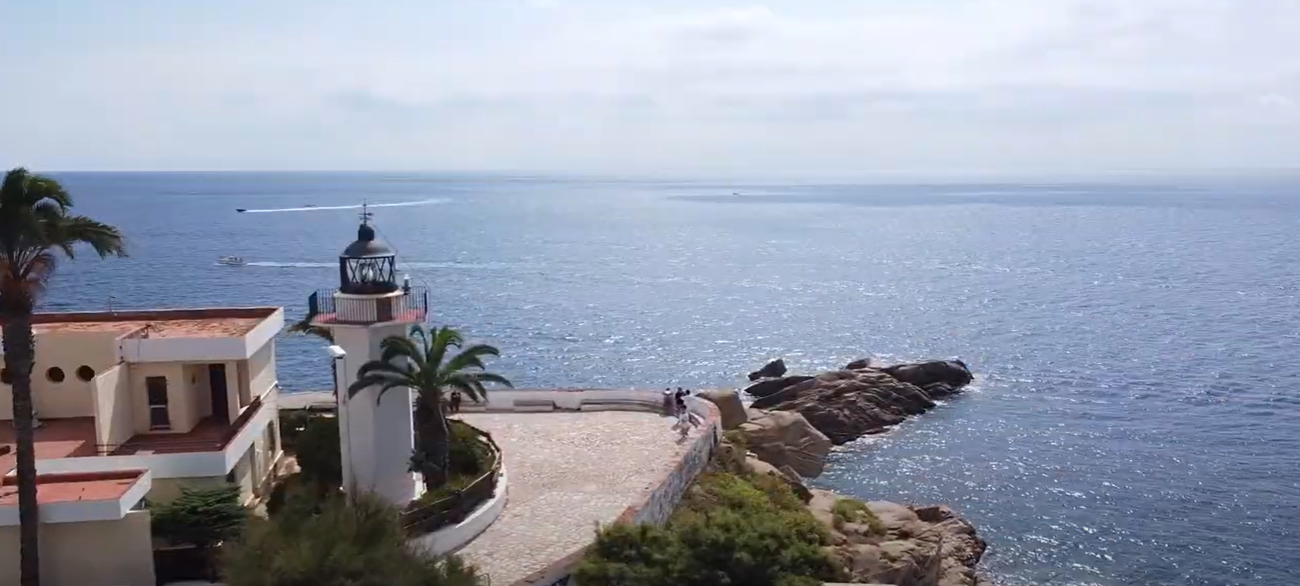Tucked away on the Costa Brava’s middle stretch, Palamós is a proper gem that’s managed to dodge the worst excesses of mass tourism whilst still offering everything you’d want from a Mediterranean coastal town. With its working fishing port, pristine beaches, and a history that reads like a Game of Thrones script (minus the dragons), this town of 18,000 souls punches well above its weight.
I’ve been banging on about Palamós for years, and for good reason. It’s got that magical combination of authenticity and accessibility that makes it perfect for both day trips and longer stays. Whether you’re after world-class seafood, secluded coves, or simply want to soak up some proper Spanish coastal culture, Palamós delivers in spades.
What Makes Palamós Special
The Prawns That Put It on the Map
Let’s start with the obvious – everyone’s heard of Gambas de Palamós. These aren’t just any old prawns; they’re the Rolls-Royce of Mediterranean crustaceans. Deep-sea trawlers bring them in fresh daily, and the local restaurants know exactly what to do with them. The secret? The prawns are caught in the deep Mediterranean waters off the continental shelf, giving them a sweetness and texture that’s simply incomparable.

A Working Port with Soul
Unlike many Costa Brava towns that have gone full tourist-mode, Palamós maintains its identity as a proper fishing port. The morning fish auction is still a thing, the boats still head out at dawn, and the local economy doesn’t completely collapse come October. It’s this authenticity that makes the place special.
Strategic Location
Palamós sits perfectly positioned for exploring the wider Costa Brava. You’re within easy reach of the medieval villages of Pals and Peratallada, the stunning beaches of the Empordà, and the artistic heritage of the region. Yet it’s substantial enough to keep you occupied for days without venturing beyond its boundaries.
A Brief History (The Dramatic Version)

Ancient Beginnings
The area’s been inhabited for over 5,500 years, with dolmens scattered across the hills and Iberian settlements dating back to the 6th century BCE. The remains of one such settlement can still be seen overlooking Platja Castell, whilst the medieval castle at La Fosca Beach was built on top of Roman villa ruins.
The Birth of Palamós (1279)
King Pere el Gran of Aragón founded Palamós (originally called Palamors) on 3 December 1279. He needed a new port after the existing one on the River Ter had silted up, and the deep natural harbour here was perfect for his expanding trade with Sicily. The founding charter guaranteed that settlers could live “free from any servitude” – a promise that would prove important later.
Pirates, Raids, and Redbeard
The town’s strategic importance made it a target. The most dramatic attack came in 1543 when the Ottoman pirate Barbarossa (Redbeard) arrived with over 20 ships. His forces breached the town walls, killed the defenders, and spent two days systematically destroying everything they could find. Both churches were burned, houses demolished, and the population scattered. The devastation was so complete that Pope Paul III had to intervene to aid recovery.
Wars Upon Wars
Palamós changed hands more times than a dodgy second-hand car. The Thirty Years’ War, the Franco-Spanish War, the War of Spanish Succession, the Napoleonic Wars – each brought fresh destruction. The town walls were built and rebuilt, bastions erected and demolished, and the population fluctuated wildly depending on which army was in residence.
The Cork Boom
The mid-1800s brought prosperity through cork production. French descendants established workshops producing cork stoppers for champagne and wine bottles, taking advantage of the vast cork oak forests in the region. At its peak, the industry employed around 4,000 people, making the Baix Empordà a worldwide reference point for cork production.
Modern Times
Tourism gradually replaced fishing as the main economic driver from the 1960s onwards, though thankfully the development was more restrained than in other parts of Spain. Today, Palamós maintains its character as both a working port and a holiday destination.
When to Visit Palamós
Summer (June-August)
The peak season brings guaranteed sunshine, warm seas, and a lively atmosphere. Temperatures hover around 25-30°C, perfect for beach days and evening strolls. The downside? Crowds, higher prices, and the need to book everything in advance. The town absolutely buzzes with activity – restaurants stay open late, there’s live music in the squares, and the beaches are at their most sociable.
Spring (April-May)
My personal favourite time to visit. The weather’s warming up nicely (18-23°C), the Easter crowds have dispersed, and everything’s opening up after winter. The countryside is green and wildflowers are blooming. Perfect for hiking, cycling, and exploring without the summer heat.
Autumn (September-October)
September is brilliant – the sea’s still warm from summer, the crowds have thinned, and the light takes on that magical Mediterranean quality. October can be glorious too, though you’ll need to check restaurant opening times as some places start their winter breaks.
Winter (November-March)
Don’t write off winter entirely. Many restaurants and attractions close, but the ones that remain open often offer their best value. The weather’s mild (12-16°C), perfect for hiking and exploring inland. Plus, you’ll have the place largely to yourself – very romantic if you’re that way inclined.

Getting to Palamós
By Car
The most flexible option. Take the AP-7 motorway to junction 6 (Girona Nord), then follow the C-31 coast road. From Barcelona, it’s about 1 hour 45 minutes. From the French border, allow 45 minutes. The coastal route via Tossa de Mar is prettier but takes longer.

By Bus
SARFA buses run regular services from Barcelona (2 hours), Girona (1 hour), and other Costa Brava towns. I’d check the Omio website for times and tickets. The bus station is centrally located, making it convenient for onward travel.
By Air
Girona-Costa Brava Airport is 45 minutes away and serves numerous European destinations. Barcelona Airport is 1 hour 45 minutes but has more flight options. Both have good bus connections to Palamós.
By Train
The nearest mainline station is Girona, from where you’ll need to catch a bus. If you look on RailEurope, you’ll be able to check the schedule and buy tickets.
The old railway to Palamós was dismantled after the Civil War – one of those “what if” moments that might have changed the town’s development entirely.
Parking in Palamós
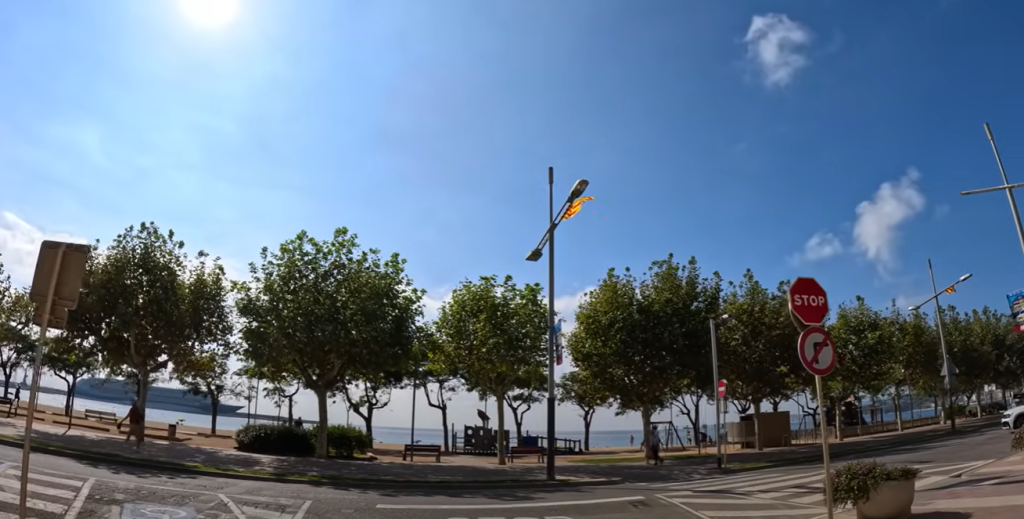
Summer Parking Strategy
Forget driving into the centre during July and August unless you enjoy stress. The seafront car parks fill up by 10 AM, and the narrow streets weren’t designed for the volume of traffic they now handle.
Best Options:
- Aparcament Port Vell: The main paid car park near the old port. Gets busy but usually has spaces.
- Residential Streets: Try the streets behind Avinguda de Catalunya, but respect residents’ spaces.
- La Planassa: Free parking area reclaimed from the sea, but it’s a 10-minute walk to the centre.
- Early Bird Strategy: Arrive before 9 AM to secure a spot near the beaches.
Off-Season Parking
Much more relaxed. Most street parking is free, and the car parks rarely fill up. You can actually drive around the town centre without wanting to abandon your car and walk.
Blue Zone Parking
The historic centre has regulated parking zones. Look for the blue lines and pay at the machines. It’s reasonably priced and allows you to explore the old town on foot.
Accessibility in Palamós
Getting Around
The old town’s narrow, cobbled streets weren’t designed with wheelchairs in mind, but the newer areas are more accessible. The seafront promenade is flat and well-maintained, perfect for mobility scooters or wheelchairs.
Beach Access
- Platja Gran: Has wooden walkways leading to the sand and accessible toilets.
- Platja de la Fosca: More challenging due to the rocky coastline, but there are accessible viewing points.
- Platja de Castell: Basic access via the coastal path, but the beach itself is unspoilt (read: no facilities).
Restaurants and Attractions
Most modern restaurants have step-free access, but the atmospheric places in the old town often have steps. The Fishing Museum is fully accessible, and the marina area is designed with accessibility in mind.
Accommodation
Newer hotels generally have accessible rooms, but always check in advance. The Hotel Trias, rebuilt after wartime bombing, meets modern accessibility standards.
Best Viewpoints for Those Perfect Snaps
Sa Punta Lighthouse
The highest point in the old town offers panoramic views across the bay. The lighthouse itself is photogenic, and the views extend along the coast in both directions. Best at sunset when the light turns golden.

Plaza Murada
This elevated square provides classic views over the bay and marina. The medieval walls frame the shot nicely, and you can capture both the working port and the pleasure craft.
Castell de Sant Esteve (La Fosca)
The ruins of this medieval castle, built on Roman foundations, offer dramatic coastal views. The contrast between the ancient stones and the blue Mediterranean is Instagram gold.

Platja de Castell Viewpoint
A short walk from the beach leads to elevated rocky outcrops with views back towards the town. Great for capturing the sweep of the coastline.
El Pedró District
The old fishermen’s quarter provides authentic street scenes and glimpses of local life. The narrow streets and traditional houses tell the story of working Palamós.
Mirador del Molí de Vent
Turn right at the church and catch a cliff-side track that climbs to the old windmill lookout. The view of the bay—especially at dawn or dusk—is epic.
Sant Esteve Castle Turret
Climb to the top to access rounded towers that frame the sea and town below. Ideal for sunsets.
Coastal Path (GR-92)
Take the signposted trail past beach bars and headlands. Grab your phone—they’ve blessed this route with some of the Costa Brava’s most Instagrammed spots.

Must-See Sights
The Old Town
Start at Carrer Major, the oldest street in Palamós, and work your way through the medieval lanes. The Church of Santa Maria is the oldest building still standing, having survived pirate attacks, wars, and time itself.

The Fishing Museum (Museu de la Pesca)
Housed in a former boat shed, this is allegedly the first museum dedicated to fishing around the entire Mediterranean.

Beyond the obvious maritime exhibits, they run temporary exhibitions with historic photos and local stories. The fish auction and market visits are particularly engaging.
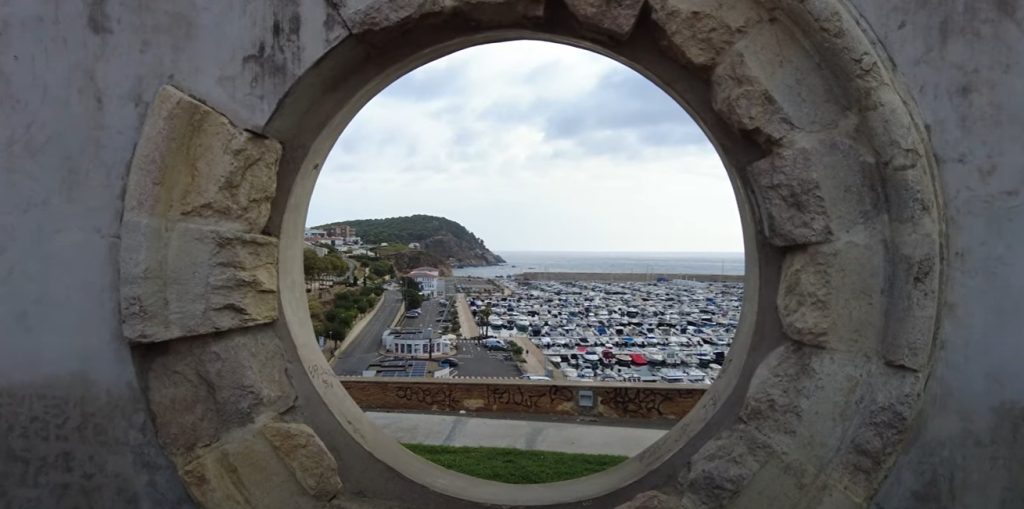
The Port and Marina
The contrast between the working port (Port Vell) and the modern marina tells the story of Palamós perfectly. Watch the fishing boats unload their catch, then stroll among the luxury yachts. The morning fish auction is a spectacle worth setting an alarm for.
La Fosca Beach and Castle
A 20-minute walk from the town centre brings you to this more secluded beach with its medieval castle ruins. The beach itself is lovely, but the real attraction is the castle, built on Roman foundations with layers of history literally built into the walls.
Platja de Castell
This unspoilt beach requires a bit of effort to reach but rewards you with relative solitude and the remains of an Iberian settlement. The contrast between ancient history and natural beauty is striking.
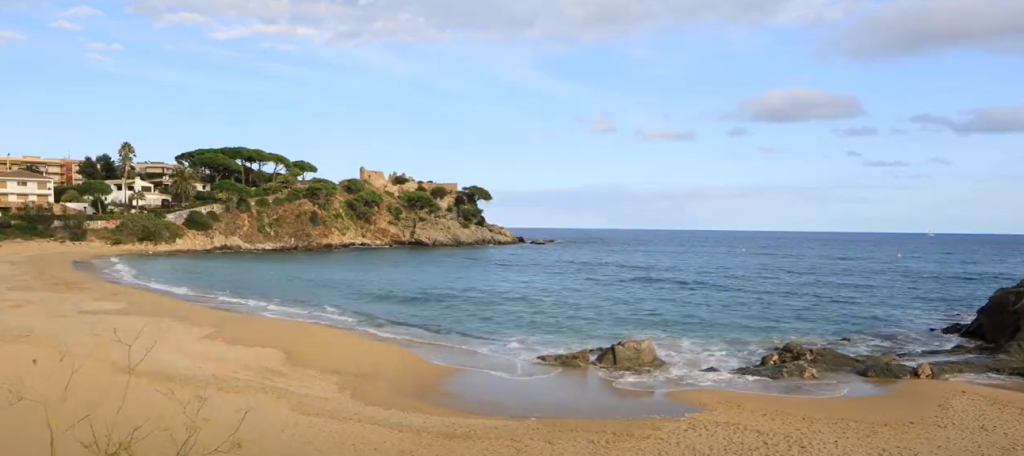
The Food Scene
Seafood Specialities
Obviously, you must try the Gambas de Palamós. The best restaurants serve them simply grilled with just a touch of garlic and parsley. Suquet de peix (fish stew) is another local speciality, made with whatever the boats brought in that morning.
Where to Eat
- Restaurants along El Mur: The seafront strip offers everything from simple tapas to serious gastronomy.
- El Pedró District: The fishermen’s quarter has several authentic family-run places.
- Port Area: For the freshest seafood, eat as close to where it’s landed as possible.
Cooking Classes
Several places offer hands-on cooking classes focusing on local seafood. It’s a great way to learn about local ingredients and techniques whilst having a laugh.
Beaches Around Palamós
Platja Gran
The main town beach is sandy, well-equipped, and family-friendly. It gets busy in summer but is the most convenient for amenities.
Platja de la Fosca
A more secluded option with the medieval castle as a backdrop. The beach bar serves excellent seafood, and the swimming is generally calmer than at the main beach.
Platja de Castell
For those seeking solitude, this smaller beach requires a walk but offers peace and the bonus of ancient Iberian ruins.
Cala S’Alguer
A tiny cove popular with locals, accessible via a coastal path. Perfect for escaping the crowds.
Beyond the Town
Nearby Villages
- Pals: Medieval village with stunning architecture and great restaurants.
- Peratallada: Another medieval gem, perfect for afternoon exploration.
- Begur: Hilltop town with fantastic views and excellent beaches nearby. Read our in-depth guide here for detailed information.
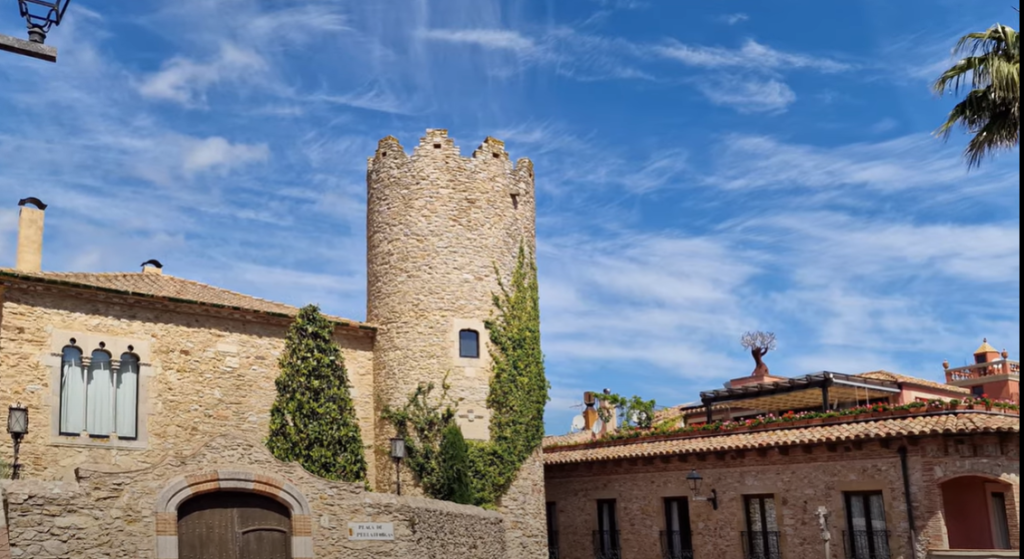
Wine Country
The D.O. Empordà wine region surrounds Palamós. Several wineries offer tastings and tours, showing off the local varieties that pair beautifully with the seafood.
Hiking and Cycling
The Camí de Ronda coastal path connects Palamós to neighbouring beaches and coves. Inland, the Gavarres hills offer forest walks and views across the region.

Practical Tips
Language
Catalan is the local language, but Spanish is universally understood. English is spoken in tourist areas, but a few words of Spanish or Catalan will always be appreciated.
Money
Cards are widely accepted, but smaller establishments might prefer cash. There are several banks and cash machines in the town centre.
Shops and Services
The main shopping area is around Avinguda de Catalunya. The Tuesday market has been running since 1279 – that’s nearly 750 years of Tuesdays! It’s worth timing your visit to coincide.
Medical Services
Palamós has the county hospital for the Baix Empordà region, so medical care is readily available.
Annual Events
Festa Major (August)
The main town festival brings music, dancing, and traditional celebrations. The streets come alive with activities, and it’s a great chance to see local culture in action.
Fira de la Gamba (October)
The prawn festival celebrates the town’s most famous export. Restaurants compete to create the best prawn dishes, and there are tastings throughout the town.
Carnival (February/March)
The pre-Lent celebrations are surprisingly elaborate for a town this size, with parades, costumes, and plenty of revelry.
Where to Stay
Hotels
- Hotel Trias: Rebuilt after wartime bombing, this seafront hotel offers modern comfort with historic significance.
- Hotel Voramar: Family-run place with sea views and traditional hospitality.
Apartments
Self-catering apartments are popular and widely available. They’re particularly good value for longer stays and give you the flexibility to shop at the local markets.
Camping
Several campsites in the area offer a budget-friendly option close to nature.
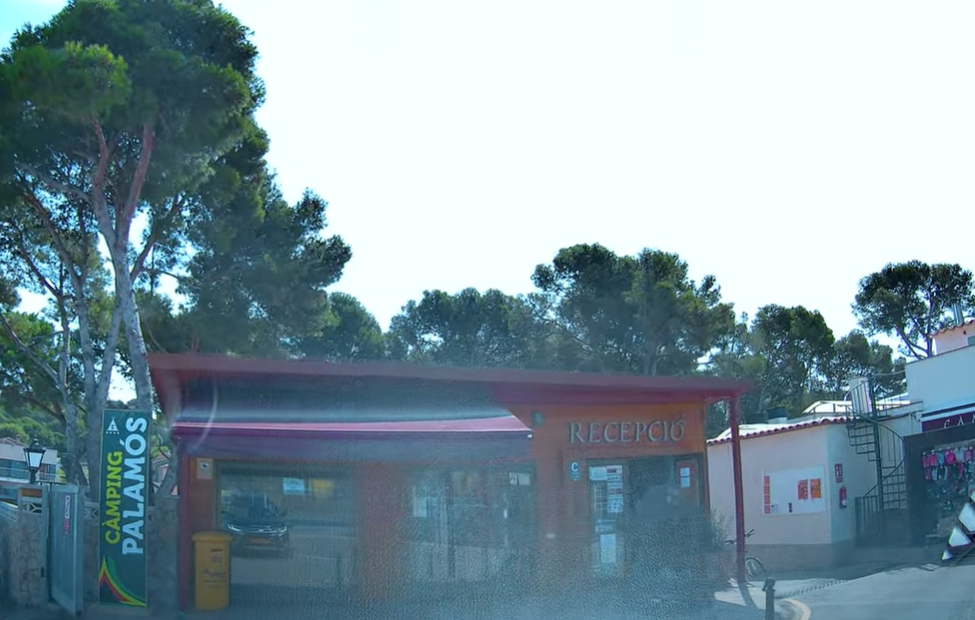
Day Trip Options
L’Estartit and the Medes Islands
The marine reserve islands offer excellent snorkelling and diving. Glass-bottom boat trips are available for non-divers.
Girona
The historic city is worth a full day. The cathedral, Jewish quarter, and Game of Thrones filming locations make it a compelling destination.
Cadaqués and Port Lligat
Salvador Dalí’s former home and the picturesque white village where he lived. A longer day trip but worth the effort.

Final Thoughts
Palamós manages to be both authentic and accessible, a combination that’s increasingly rare on the Mediterranean coast. It’s got the infrastructure to handle tourism without losing its soul, the restaurants to satisfy serious food lovers, and the history to keep culture vultures happy.
The town’s genius lies in its refusal to put all its eggs in the tourism basket. The working port, the hospital, the local businesses – they all contribute to keeping Palamós real. You’re not just visiting a theme park version of coastal Spain; you’re experiencing the genuine article.
Whether you’re here for a day, a week, or thinking of staying longer, Palamós rewards the curious traveller. It’s not the flashiest destination on the Costa Brava, but it might just be the most satisfying. In a world of over-developed coastal resorts, Palamós remains refreshingly human-scale, historically aware, and utterly charming.
The prawns are pretty good too.
